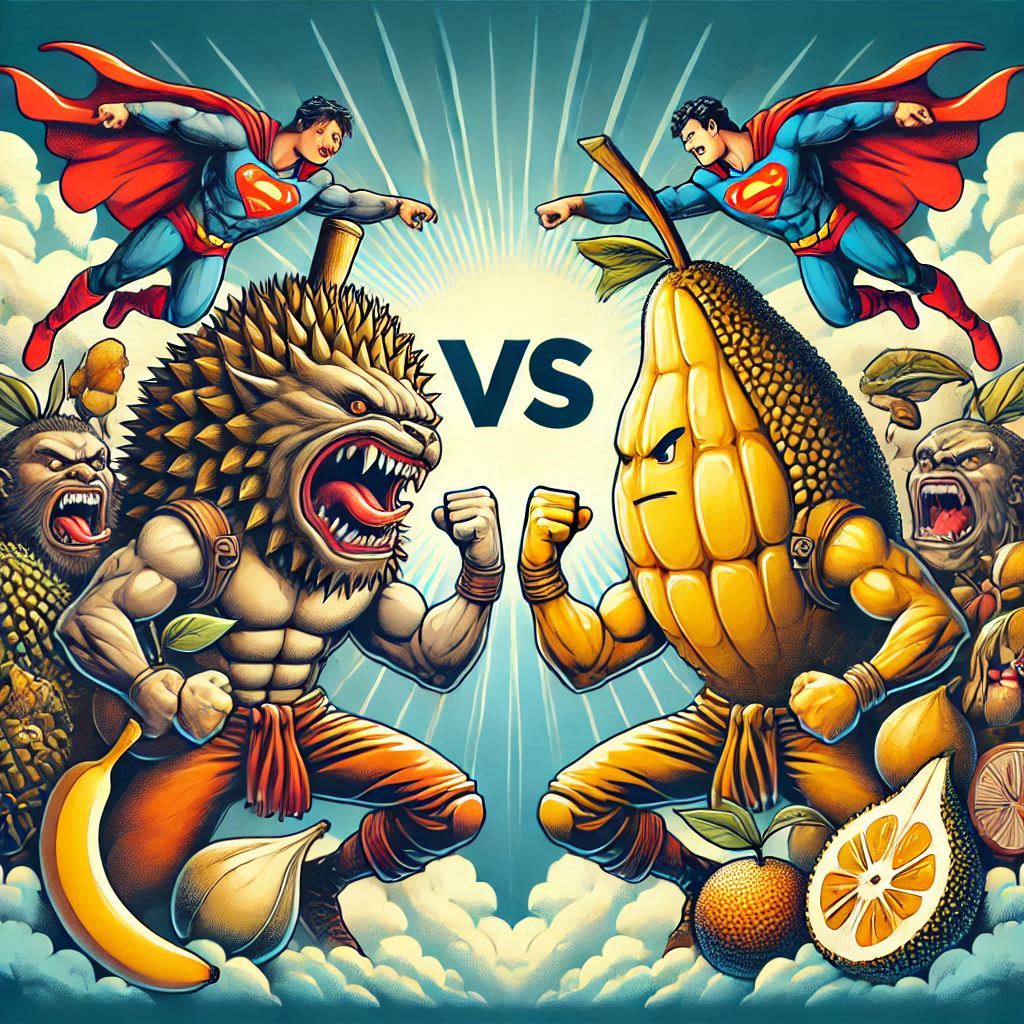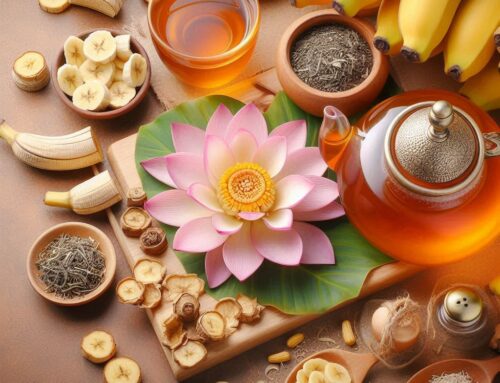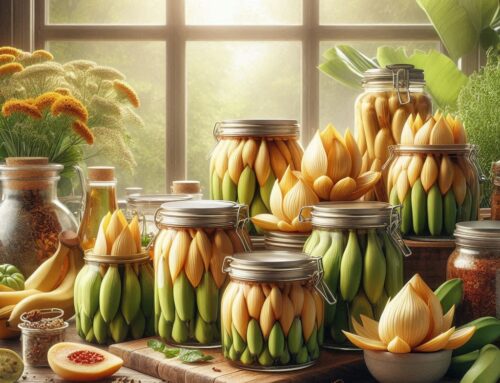
Introduction: Unveiling the Exotic World of Durian and Jackfruit
When it comes to tropical fruits, few are as intriguing and polarizing as durian and jackfruit. Often celebrated for their unique flavors and textures, these exotic fruits captivate the adventurous palate while stirring curiosity among those unfamiliar with their characteristics.
Durian fruit, often referred to as the “king of fruits,” is notorious for its strong aroma that can be off-putting to some yet enticing to others. Its creamy texture and complex flavor profile—ranging from sweet custard-like notes to savory undertones—make it a delicacy in many Southeast Asian countries.
On the other hand, jackfruit fruit is gaining popularity worldwide not only for its sweet taste but also for its versatility in culinary applications. The largest tree-borne fruit in the world, jackfruit can weigh up to 80 pounds and is known for its fibrous texture that mimics pulled pork when cooked, making it a popular meat substitute in vegan dishes.
In this introduction to tropical fruits, we will delve into an exotic fruits comparison between durian and jackfruit, exploring their origins, nutritional benefits, and cultural significance. Whether you’re a seasoned fruit enthusiast or a curious newcomer eager to expand your palate, understanding these fascinating fruits will enrich your appreciation of nature’s diverse bounty.
Taste Profile: What Sets Durian and Jackfruit Apart?
Durian and jackfruit are two tropical fruits that often capture the curiosity of adventurous eaters, yet their taste profiles are distinctively different. Understanding these differences can enhance your appreciation for each fruit’s unique qualities.
The durian has a reputation for its strong aroma, which some find off-putting while others relish. The durian taste description often includes notes of sweet custard with hints of almond, caramel, and a slightly savory undertone. Its creamy texture adds to its rich flavor profile, making it a delicacy in many Southeast Asian countries.
On the other hand, jackfruit offers a completely different experience. Its flavor is much milder compared to durian, with a sweet taste reminiscent of a blend between pineapple and banana. The texture is also distinct; when ripe, jackfruit has a stringy consistency similar to pulled pork or shredded chicken, which makes it popular in vegan cuisine as a meat substitute.
The flavor difference between durian and jackfruit is evident not only in their tastes but also in how they are used in culinary applications. While durian is often enjoyed fresh or used in desserts like ice cream or pastries due to its bold flavor, jackfruit’s versatility allows it to be used both ripe as a sweet treat or unripe as part of savory dishes.
In summary, while both fruits offer unique tasting experiences that reflect their tropical origins, understanding the nuances between the intense flavors of durian and the subtle sweetness of jackfruit can help you appreciate why each holds its special place in global cuisine.
Texture Comparison: Understanding the Unique Characteristics of Each Fruit
When it comes to the world of fruits, texture plays a significant role in shaping our culinary experiences and preferences. Understanding the unique characteristics of each fruit’s texture can enhance our appreciation and selection for different culinary uses.
Starting with the durian, its texture is as distinctive as its aroma. The flesh of a durian is creamy and custard-like, with a rich, buttery consistency that melts in your mouth. This soft texture contrasts sharply with its spiky exterior, making it a sensory delight for those who enjoy its complex flavors.
On the other hand, jackfruit offers an entirely different textural experience. Known for its versatility, jackfruit has a fibrous and stringy texture when ripe. The flesh is firm yet tender, resembling pulled meat when cooked or shredded. This unique characteristic makes jackfruit an excellent meat substitute in various vegetarian dishes.
By comparing these textures—durian’s smooth creaminess versus jackfruit’s fibrous firmness—we gain insights into how each fruit can be utilized in different culinary contexts. Whether you’re crafting desserts or savory dishes, understanding fruit textures allows you to make informed choices that align with your desired taste and mouthfeel outcomes.
Nutritional Value: Health Benefits and Nutrient Content in Durian vs Jackfruit
When exploring the nutritional value of tropical fruits, durian and jackfruit often stand out for their unique flavors and health benefits. Understanding the nutrition facts of each can help you make informed dietary choices.
Durian is rich in energy-boosting carbohydrates, providing about 147 calories per 100 grams. It is also a good source of dietary fiber, which aids in digestion and helps maintain a healthy gut. Additionally, durian contains essential vitamins such as vitamin C and B-complex vitamins like niacin, riboflavin, and thiamine. These contribute to improved immune function and energy metabolism.
On the other hand, jackfruit offers its own set of nutritional benefits. Jackfruit is lower in calories compared to durian, with around 95 calories per 100 grams. It is an excellent source of vitamin C as well as vitamin A, promoting good vision and immune health. Jackfruit also provides a significant amount of potassium, which supports cardiovascular health by helping to regulate blood pressure.
Both fruits offer unique health benefits; for instance, the high antioxidant content in both durian and jackfruit can help combat oxidative stress in the body. Moreover, their fiber-rich composition aids digestive health while potentially reducing cholesterol levels.
Incorporating either or both of these fruits into your diet can provide diverse nutrients that support overall well-being while adding exciting flavors to your meals. Whether you prefer the creamy texture of durian or the sweet fleshiness of jackfruit, both are nutritious options worth considering for their distinct contributions to a balanced diet.
Culinary Uses: How to Incorporate These Fruits into Your Diet
Incorporating exotic fruits like durian and jackfruit into your diet can be a delightful culinary adventure, offering unique flavors and nutritional benefits. While these fruits may seem intimidating at first, there are numerous ways to enjoy them in everyday meals.
Durian is known for its strong aroma and creamy texture. It can be used in a variety of recipes that highlight its rich flavor. One popular option is to blend durian into smoothies or milkshakes for a tropical twist. Additionally, durian can be used in desserts such as ice cream or custard, where its natural sweetness shines through.
On the other hand, jackfruit is incredibly versatile due to its fibrous texture that mimics meat when cooked. This makes it an excellent substitute in vegetarian or vegan dishes. For instance, you can shred young green jackfruit and use it as a filling for tacos or sandwiches, seasoned with spices to mimic pulled pork or chicken. Ripe jackfruit also works well in sweet dishes; try adding it to fruit salads or baking it into cakes and muffins for an exotic flavor boost.
Whether you’re looking to experiment with new flavors or add more variety to your meals, exploring the culinary uses of these exotic fruits can open up a world of delicious possibilities. With their unique textures and tastes, durian and jackfruit offer exciting opportunities for creative cooking that will surely tantalize your taste buds.
Sustainability and Cultivation Practices for Durian and Jackfruit
Sustainable fruit farming is becoming increasingly important as the demand for tropical fruits like durian and jackfruit continues to rise. Cultivation practices for these fruits must evolve to minimize their environmental impact while maximizing yield and quality.
For durians, sustainable practices begin with selecting the right location. Durians thrive in well-drained soil and require a humid, tropical climate. Farmers can enhance sustainability by employing agroforestry techniques, which involve integrating durian trees with other compatible plant species. This not only promotes biodiversity but also improves soil health and reduces pest populations naturally.
Similarly, jackfruit cultivation benefits from sustainable methods such as organic farming and crop rotation. Jackfruits are adaptable to various soil types but prefer deep, fertile soils rich in organic matter. By using natural fertilizers like compost or manure instead of chemical inputs, farmers can maintain soil fertility while reducing pollution.
Both durian and jackfruit growers can adopt water conservation strategies such as rainwater harvesting or drip irrigation systems to optimize water use efficiency. These methods ensure that water resources are used judiciously without compromising the growth of the crops.
Moreover, understanding the environmental impact of growing these fruits is crucial for developing effective sustainability strategies. This includes assessing carbon footprints and implementing measures to reduce greenhouse gas emissions throughout the production process.
In conclusion, adopting sustainable cultivation practices for durians and jackfruits not only supports environmental preservation but also enhances long-term agricultural productivity. By focusing on eco-friendly techniques, farmers can contribute significantly to a more sustainable future in tropical fruit agriculture.
The Cultural Significance of Durian and Jackfruit in Different Regions
Durian and jackfruit, two of the most distinctive fruits in the world, hold significant cultural importance in various regions. In Asia, durian is often referred to as the “king of fruits” due to its unique taste and aroma that evoke strong reactions. Its cultural significance is deeply rooted in many Southeast Asian countries where it is celebrated in festivals and revered as a delicacy. In Thailand, for instance, durian is not only a popular fruit but also a symbol of prosperity and abundance.
Meanwhile, jackfruit has been traditionally used around the world for its versatility. In India, it is considered one of the largest tree-borne fruits and plays an integral role in local cuisines. The fruit’s flesh can be consumed ripe or unripe, making it an essential ingredient in both sweet dishes and savory curries. Beyond its culinary applications, jackfruit leaves are used for wrapping food or even as natural plates during traditional ceremonies.
These fruits are more than just food; they embody cultural heritage and practices that have been passed down through generations. The cultural significance of durians in Asia highlights their role not only as a source of nourishment but also as part of social rituals and economic activities. Similarly, traditional uses for jackfruits around the world showcase their adaptability across different cultures and climates, underlining their importance beyond mere consumption.
Conclusion: Choosing Between Durian and Jackfruit – Which Wins Your Heart?
When it comes to choosing between durian and jackfruit, both fruits offer unique flavors and textures that cater to different palates. Durian is famous for its creamy texture and strong aroma, which can be polarizing. It’s a delicacy in many Southeast Asian countries, celebrated for its rich taste that combines sweet and savory notes. On the other hand, jackfruit is known for its versatility and milder flavor profile. Its fibrous flesh can be enjoyed both ripe as a sweet fruit or unripe as a savory meat substitute in various dishes.
Nutritionally, both fruits are packed with vitamins and minerals. Durian is particularly high in healthy fats and provides a good source of energy. Jackfruit stands out with its high fiber content and vitamin C levels, making it an excellent choice for those looking to boost their immune system.
Ultimately, the decision between durian and jackfruit comes down to personal preference. If you’re adventurous with your taste buds and enjoy bold flavors, durian might win your heart. However, if you prefer something more versatile with a gentle sweetness, jackfruit could be your go-to choice. Whichever fruit you choose to embrace will undoubtedly enrich your culinary experience with its distinct characteristics.






